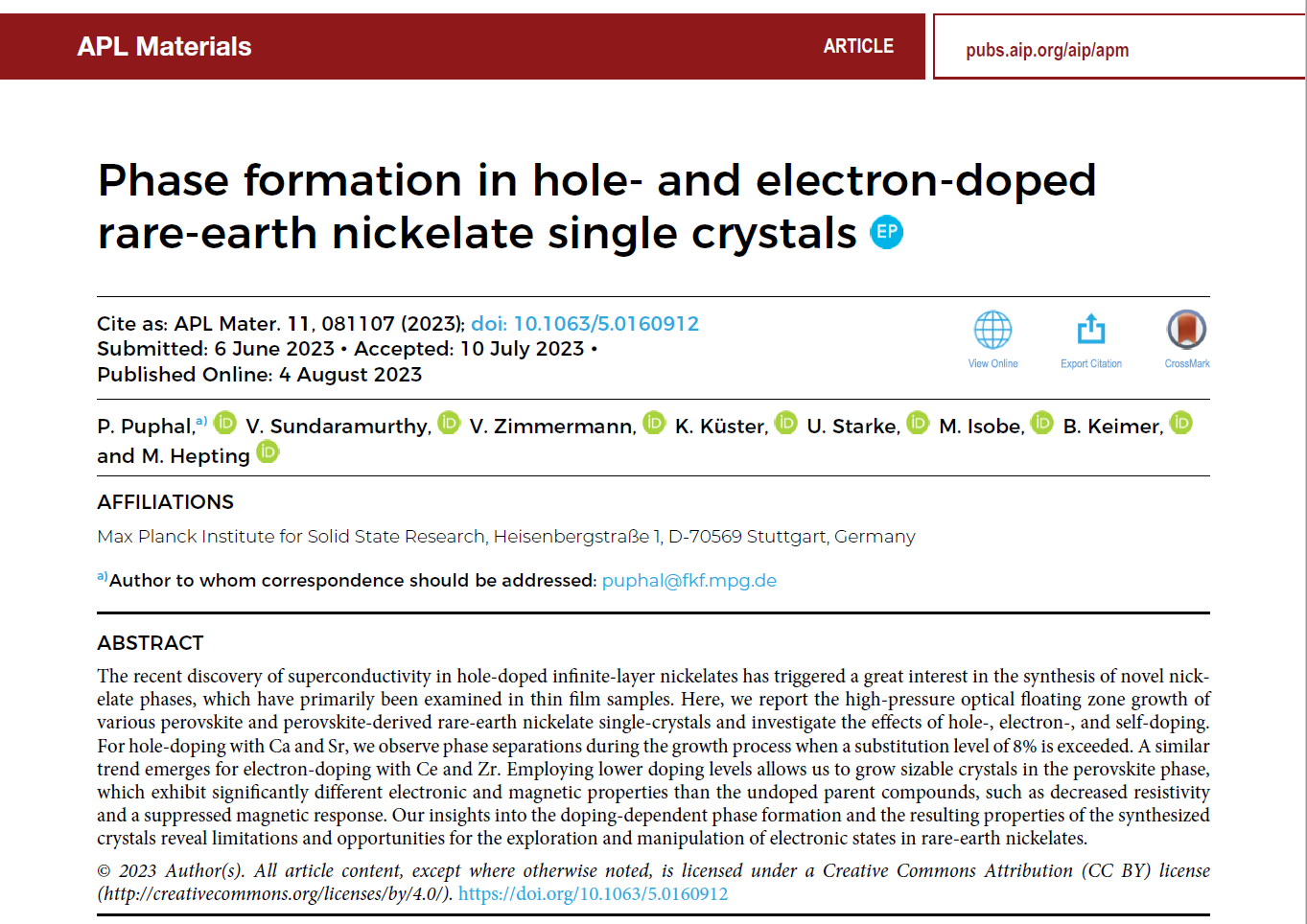Since the discovery of superconducting behavior in hole-doped rare-earth nickelates with an infinite-layer crystal structure Ruddlesden–Popper nickelates Rn+1NinO3n+1 have increasingly become the focus of research again in recent years. However, growing larger single crystals in this class of compounds posed a major experimental challenge. The use of the high-oxygen pressure high-temperature optical floating zone (OFZ) technique led to the technical breakthrough that enabled the growth of large Rn+1NinO3n+1 single crystals.
In this study, researchers from the Max Planck Institute for Solid State Research investigated the electron-doping of PrNiO3 as well as the electron- and hole-doping of LaNiO3 by substituting up to 16% of the respective rare-earth-element. For this purpose, undoped and doped single crystal boules were grown at up to 300 bar oxygen using a ScIDre HKZ-300 furnace.
The growth of these doped perovskite nickelates represents an outstanding further development compared to earlier works that were focused on undoped LaNiO3 and PrNiO3 single-crystals. One of the most important results, namely that substitutions higher than 8% or any electron doping of the Ruddlesden–Poppers phases (n = 2, 3) lead to phase separation for OFZ growth under 300 bars of oxygen pressure, emphasise the need for new, cutting-edge strategies that go beyond the conventional single dopant route.






